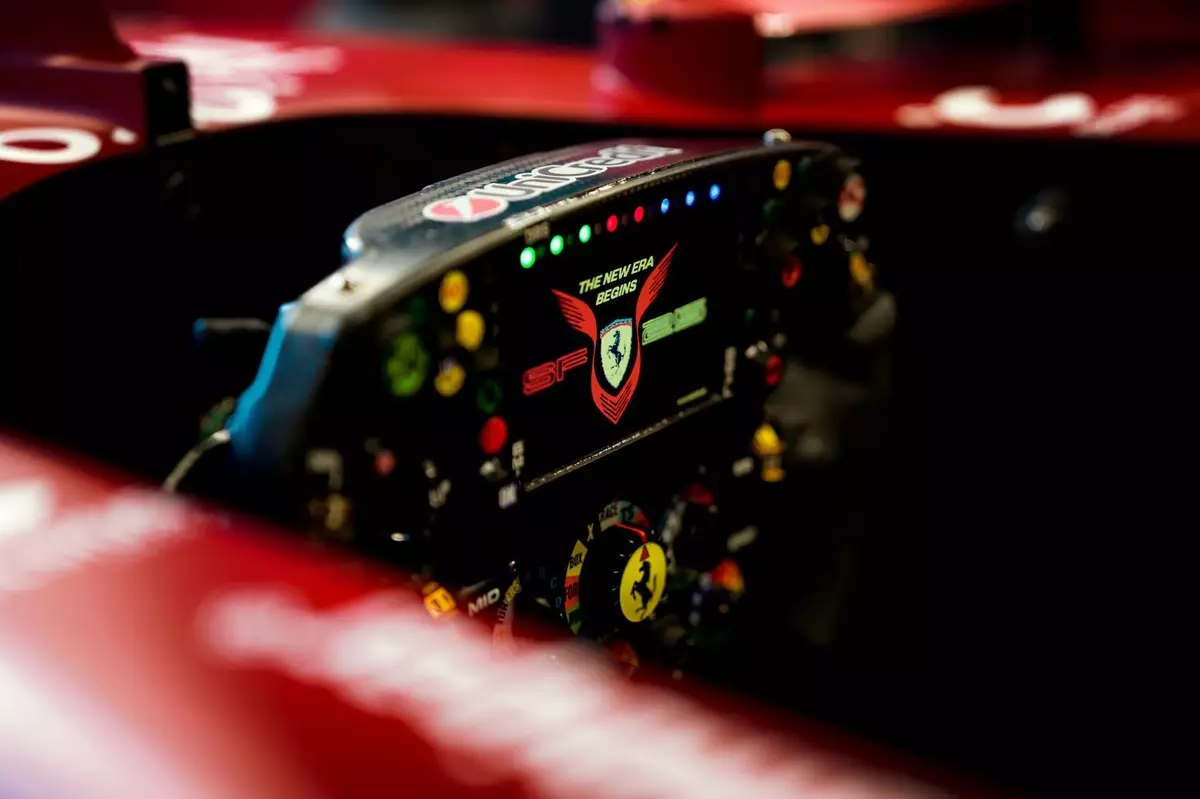Lewis Hamilton’s transition to Ferrari marks a pivotal moment in his illustrious Formula 1 career. After more than a decade with Mercedes—an era that saw him become a seven-time world champion—Hamilton’s arrival at the Scuderia comes with a blend of excitement and challenge. While his initial performances in Australia and China were promising, it became clear that the adaptation process to the SF-25’s different design philosophy requires more than just raw talent; it demands a recalibration of his driving style and strategies. The early indicators show that Hamilton is eager to immerse himself in this new environment, yet it is evident that the road ahead is laden with complexities that will test even his remarkable resilience and adaptability.
A Tale of Two Philosophies
At the core of Hamilton’s transition lies the contrasting architectural philosophies of Mercedes and Ferrari cars. During his twelve-year tenure at Mercedes, Hamilton developed muscle memory that dictated his approach to driving. The intricacies of the steering wheel, throttle response, and even cockpit layout are all ingrained in him, creating a hurdle as he seeks to harness the full potential of the Ferrari machinery. With the margins between competitors shrinking, every small adjustment can make a significant difference. Recognizing this, Ferrari has undertaken significant customization efforts to align the SF-25 with Hamilton’s preferences.
The Personal Touch: Customization Efforts
Ferrari’s commitment to accommodating Hamilton’s unique style is clear, underscoring a thoughtful approach to driver integration. The personal touches extend from the steering wheel’s aesthetic to the functional reconfiguration of controls. A notable example of this personalized effort is the welcome message displayed on Hamilton’s steering wheel—a gesture that speaks volumes about the team’s intent to make him feel at home. However, such modifications go beyond superficial enhancements. Ferrari’s engineering team has made substantive changes to the steering wheel’s layout and software, introducing controls that resonate more closely with what Hamilton enjoyed at Mercedes, facilitating a smoother transition.
For instance, the new clutch and gear lever modifications prioritize ergonomics tailored to Hamilton’s driving preferences. This customization diverges significantly from the setups favored by his teammate, Charles Leclerc. Ferrari recalibrated the display metrics on Hamilton’s steering wheel, providing a treasure trove of data that surpasses what Leclerc accesses. While most drivers might opt for a streamlined dashboard, Hamilton’s steering wheel now provides key performance indicators, such as engine mappings and state of charge, allowing him to monitor vital information at a glance.
Diving Deeper: The Role of Data
In the world of Formula 1, information is power. Hamilton’s steering wheel embodies a data-centric approach that contrasts sharply with Ferrari’s conventional setups. The decision to bifurcate engine and hybrid power management into independent selections reflects Hamilton’s need for immediate accessibility to crucial performance metrics. Where Mercedes utilized a singular knob to manage power unit functions, Ferrari’s spread-out control scheme could either be seen as chaotic or refreshingly inclusive, depending on the driver’s perspective.
Furthermore, the addition of features such as temperature monitoring indicates a meticulous attention to detail in facilitating Hamilton’s integration. These subtle yet significant changes emphasize that Ferrari is not merely providing a new vehicle; they are harnessing technology to enhance Hamilton’s intuitive understanding of the car, ensuring he can deliver peak performance on the track.
Sculpting Performance: The Balance of Preferences
Yet, in this world of relentless pursuit of performance, it’s critical to consider how all these enhancements affect not just Hamilton but the team’s overall strategy. Hamilton’s preference for detailed data may not align with Leclerc’s apparent inclination towards simplicity, which raises an intriguing dilemma for Ferrari. They find themselves in the position of balancing personal preferences against a cohesive team strategy. As they customize Hamilton’s experience, one has to ponder how this duality within the cockpit dynamics influences race day outcomes and team trust.
While the technical adjustments undertaken by Ferrari aim to secure immediate results, they also invite broader questions about driver adaptation and the conflicts that arise when accommodating different styles. This approach sparks a dialogue about the inherent challenges in Formula 1, where teams must seamlessly blend strategy, technology, and human nuances.
Preparing for the Challenges Ahead
As Hamilton continues to adapt to his new role at Ferrari, the underlying narrative is not just about individual performance but about the collective evolution of a team that has historically been emblematic of racing excellence. The meticulous re-engineering of the SF-25 to fit Hamilton’s preferences signals Ferrari’s commitment to harnessing his unrivaled talent while navigating the fine line between the pressures of immediate performance and long-term integration. The early successes may be empowering, but they also highlight the ongoing journey of settling into this high-stakes environment, where every nuance in preparation could be the difference between podium finishes and missed opportunities.

